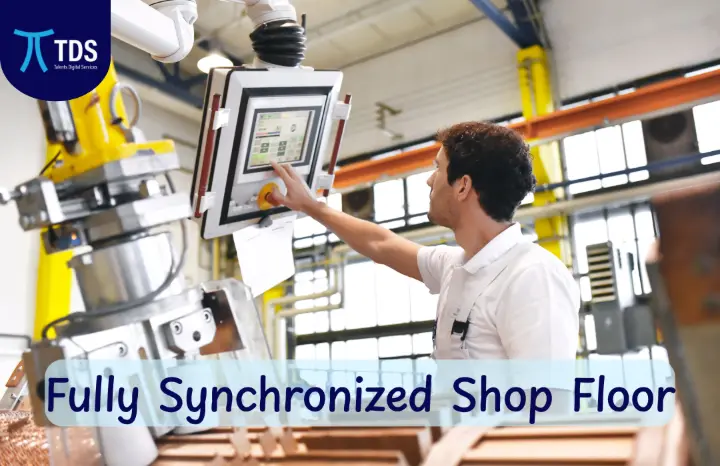Optimizing Odoo ERP Manufacturing & Inventory Modules with AI and IoT Integration
The fourth industrial revolution is not coming — it’s here. Manufacturers no longer compete solely on cost and scale; they compete on agility, insight, and digital intelligence. To lead in this new era, enterprises must transform static ERP systems into dynamic, self-optimizing platforms. That’s where the synergy of Odoo ERP, Artificial Intelligence, and IoT reshapes the manufacturing landscape.
Odoo ERP as the Foundation of Smart Manufacturing
Overview of Odoo’s Manufacturing & Inventory Modules
Odoo's Manufacturing module manages BoMs, work orders, routing, and production planning with remarkable flexibility. Its Inventory module enables real-time stock movements, warehouse operations, and traceability. Together, they form the digital nervous system of a modern factory.
The Modular Advantage for Scalable Operations
Unlike monolithic ERP systems, Odoo’s modular architecture allows businesses to scale functionality progressively — a critical factor when integrating advanced technologies like AI and IoT. This modularity reduces risk and accelerates implementation cycles.
AI Integration: From Reactive to Predictive Manufacturing
Demand Forecasting Using Machine Learning
Traditional forecasting relies on historical averages. AI-powered models, however, consider variables such as market trends, weather patterns, social signals, and seasonality — delivering granular and dynamic demand forecasts that feed directly into Odoo’s planning engine.
Quality Control through Vision-Based AI Systems
Machine vision integrated with AI can identify product defects in real time during manufacturing. These insights can be captured into Odoo’s quality module, triggering automated non-conformance reports and corrective workflows.
Intelligent Scheduling and Resource Allocation
AI models optimize production scheduling by evaluating constraints such as machine availability, workforce skills, and delivery deadlines. The result: leaner operations with reduced idle time and late orders.
IoT in Manufacturing: Real-Time Precision at Scale
Smart Sensors and Equipment Monitoring
IoT sensors attached to machinery collect temperature, vibration, speed, and load data. This telemetry is pushed into Odoo via APIs, allowing the ERP to not only monitor but respond — adjusting workflows or alerting maintenance teams before a fault occurs.
Real-Time Inventory Visibility and Movement Tracking
RFID tags, barcode scanners, and IoT gateways track every material and product in motion. Odoo receives live updates on inventory status, enabling automated replenishment, accurate stock levels, and seamless pick-pack-ship flows.
Machine Utilization and Predictive Maintenance
With continuous equipment data, machine learning models predict wear-and-tear. This transforms Odoo’s maintenance module from reactive to predictive — scheduling service only when needed, avoiding unnecessary downtime.

Odoo + AI + IoT: Architecture of a Fully Synchronized Shop Floor
Data Pipelines and Communication Between Devices and ERP
The integration stack consists of edge devices, IoT hubs, cloud platforms, and APIs feeding data into Odoo. MQTT or REST-based middleware ensures that real-time data streams are transformed into actionable ERP records.
Use of APIs and Middleware in Odoo for Integration
Odoo’s robust API ecosystem supports seamless integration with AI platforms (TensorFlow, Scikit-Learn) and IoT cloud providers (AWS IoT, Azure IoT Hub). Middleware frameworks normalize and secure data flow into the ERP environment.
Case Applications and Real-World Benefits
Reducing Downtime and Waste
AI and IoT integration within Odoo has shown up to 30% reduction in machine downtime and significant drop in material wastage — thanks to better forecasting, automated alerts, and real-time operational visibility.
Enhancing Supply Chain Transparency
When every asset, shipment, and material is tracked and analyzed, decision-makers gain true end-to-end transparency. Odoo becomes a control tower, helping leaders manage disruptions proactively.
Adaptive Production Planning
AI models adjust production plans based on constraints detected in real time — from delayed raw materials to sudden equipment faults. Odoo instantly recalculates priorities, ensuring optimal resource utilization.
Challenges in Implementation and How to Overcome Them
Data Quality and Infrastructure Gaps
Poor data hygiene can break AI models. A successful deployment begins with standardized data entry in Odoo and robust sensor calibration in IoT devices.
Organizational Readiness and Skill Alignment
The transition to smart manufacturing requires cultural and capability shifts. Investing in upskilling and involving cross-functional teams early in the transformation ensures smoother change management.
Future Outlook: Autonomous Manufacturing with Odoo at the Core
Edge Computing and On-Site Intelligence
With AI models running on edge devices, factories gain ultra-low latency decision-making — ideal for safety-critical operations and offline environments.
AI Co-Pilots in Production Decision-Making
Soon, AI agents will assist human managers within Odoo interfaces — suggesting plan revisions, flagging anomalies, and even simulating “what-if” production scenarios.
Beyond Automation — Building Cognitive Factories
The fusion of Odoo ERP, AI, and IoT is not just a technical evolution — it’s the blueprint for cognitive factories of the future. Factories that think, adapt, and optimize themselves in real time. This is not just about efficiency; it's about resilience, competitiveness, and sustainable growth.